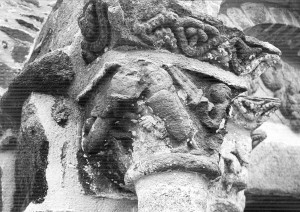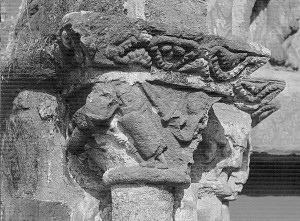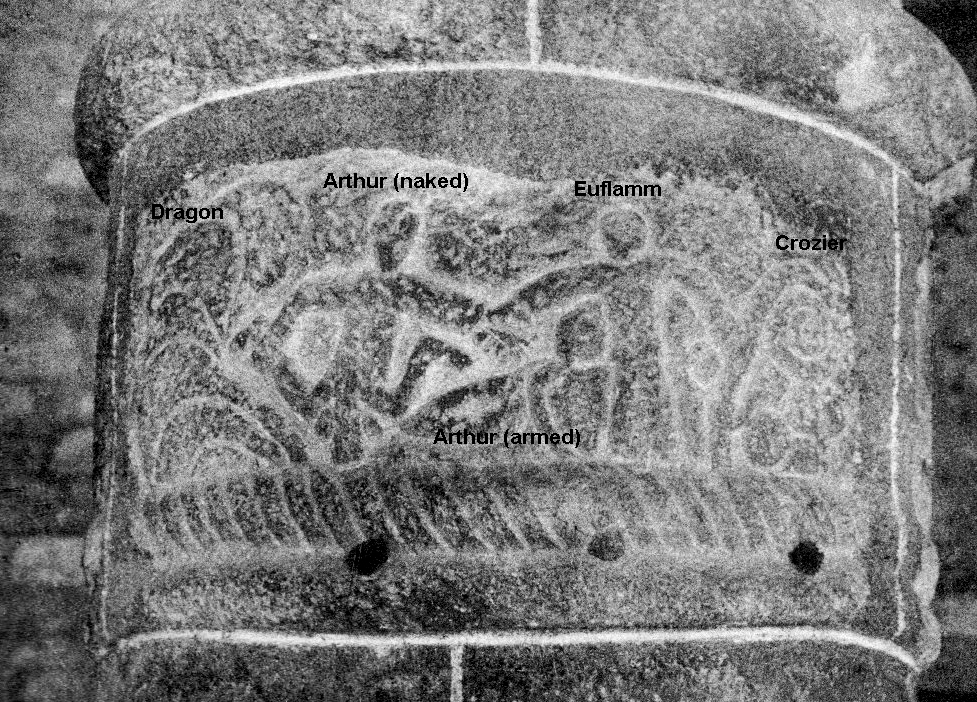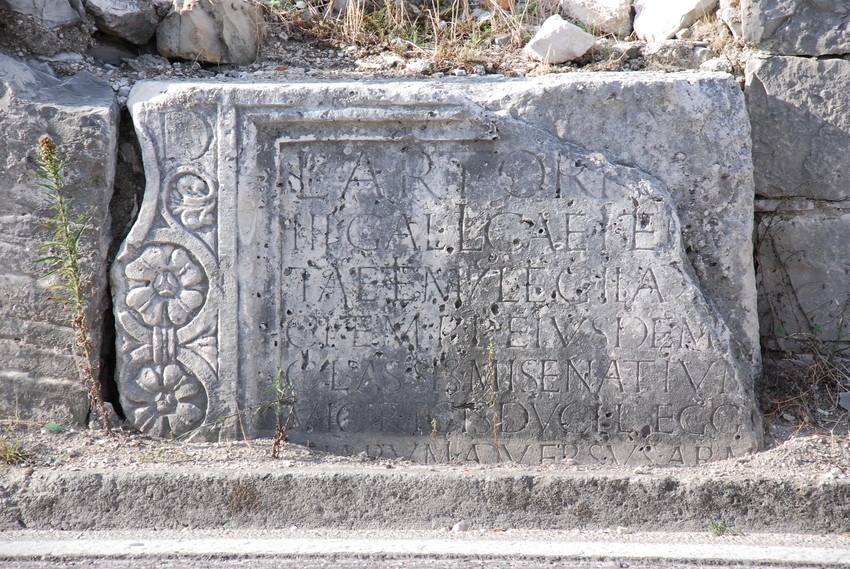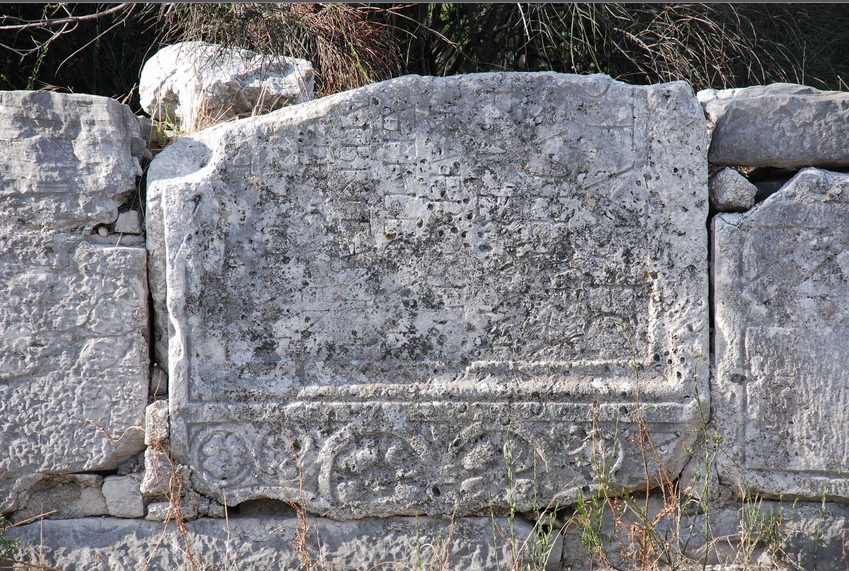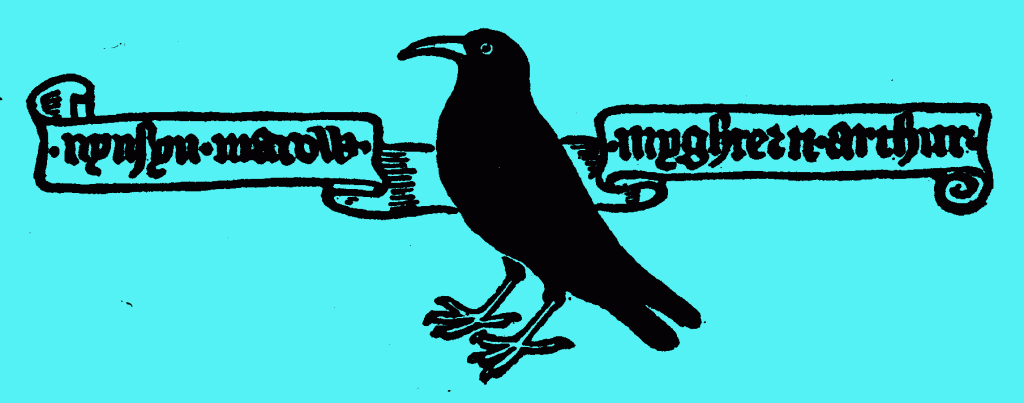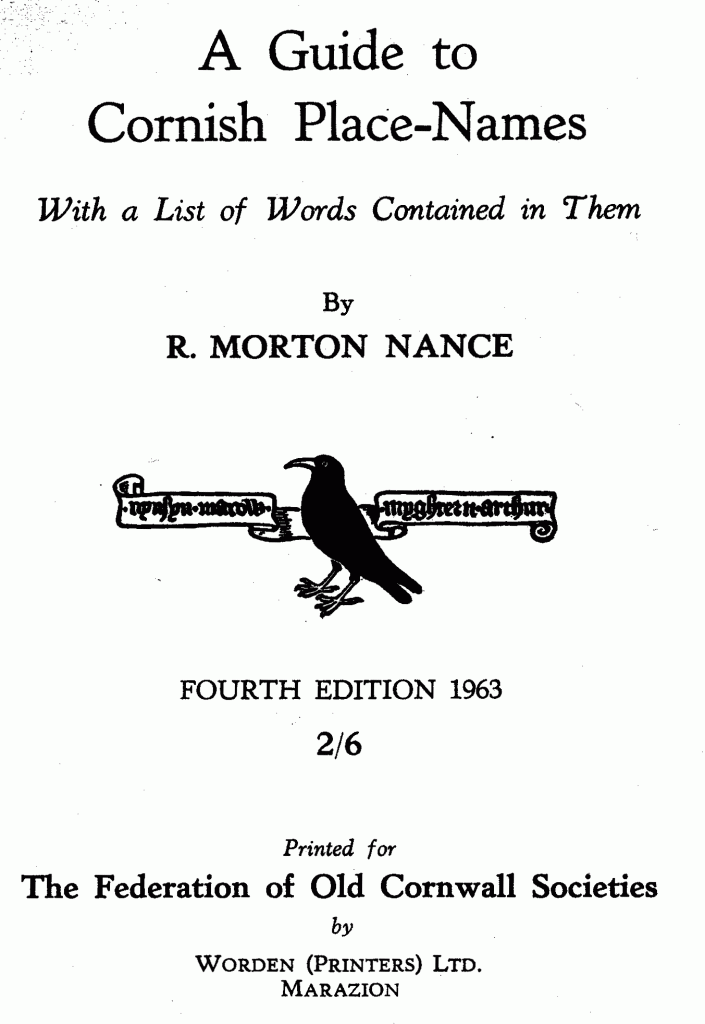Posted on Arthurnet, May 1997
Copyright May 1997, Judith P. Shoaf
The Romance of Arthur, Vortigern’s Daughter
Part 1: Ardora and Ardurius
Vortigern, tyrant over Britain, fell in love with Renwin, daughter of the pagan Hengist, and married her. By her he had three sons and a daughter: Vortimer, Catigern, Paschent, and the youngest, Ardora, so named by her mother to commemorate the passion that, she hoped, would join the British natives and Saxon colonists under these children. Ardora grew up very fair and lovely. When she was but thirteen she was already a woman, a fact alas proven by her father’s lust and her subsequent pregnancy. Her parents sent her to a convent in Auxerre, under the care of St. Germanus, to await her confinement, and she gave birth to a beautiful boy.
While at Auxerre, Ardora grew in piety and sought comfort for her shame in prayer to the Virgin Mary. She listened to St. Germain preaching and learned to read how Eve had tempted Adam, and Delilah Samson. She found comfort for her pain by resolving never to tempt any man again; she cut off her hair and, feeling unworthy of a nun’s dress, began to wear a harsh leather byrnie instead of soft cloth over her breasts.
Finally Germain wished to return her and her son, Faustus, to her family. The two of them travelled to Britain to the family villa, in a caravan of travellers, horsemen who roamed the former Empire, finding pasture for their animals and a good dinner always in exchange for news and the tools they still knew how to make. Ardora became friendly with them, particularly with a boy who admired her; he loaned her some trousers and taught her to ride like a boy, and in a few weeks she acquired a smattering of their Alan tongue. Those weeks on the road with young Lancelot, as she called him, were the happiest and freeest she had even known.
Alas, when she was delivered to her family’s villa, her father repudiated Faustus and her mother repudiated her. She found herself cast out in the countryside with her little boy, not knowing where to turn.
Her brother Paschent, however, offered to accompany her and Faustus back to Auxerre, where she would take the veil and Faustus would be raised in the monastery. Alas, as they were crossing the channel Paschent showed himself too much his father’s son, and lay with her on board ship. In her fury, she fled from the party on landing and told herself that the family that had nurtured her must indeed be the enemy of all goodness, and also her own particular enemy. From a copse she watched as Paschent took the Auxerre road with little Faustus, and resolved somehow to have revenge.
She made her way, by theft and begging, into Brittany, and found the camp of two brothers, Aurelius Ambrosius and Uther Pendragon, men whose claim to the crown was even better than her father’s, for they were of imperial Roman blood; with them she resolved to plot. She realized soon enough that she was again pregnant, but in her passion supposed that the child in her womb might be the means of inflicting crueller pain on its father. The two brothers welcomed her and offered her shelter; their wives and sisters and daughters assisted her through this second labor. Again she bore a son, and called him “Morther,” in her mother’s language, “secret killing.”
Now Uther had a daughter, Morgause, who was to be married to the King of the Orkneys far away. This young maiden took a tender interest in Ardora’s child, and offered to adopt him and take him on the journey with her. Ardora agreed, but said that the child must be brought up to hate the kings of Britain and make war on them always. Morgause, who did not quite grasp that her own brothers meant to be kings of Britain, gave her most solemn promise. However, not liking the child’s name, she changed it to “Moderatus,” which had a similar sound but accorded better with her own ideas of childish good fortune.
Ardora asked Uther and Ambrosius to allow her to train in swordsmanship with them and their sons, so that if ever again she tempted some man she would be able at least to prevent him from sinning. She began to dress as a man, and when travelling in Brittany and Gaul would pose as the son, now of Ambrosius, now of Uther. She learned to walk like a man and wield a sword and lance as well as any young man, too. She called herself Ardurius, now, for the hardships she had undergone. The assault on Greater Britain was now in preparation, and she was invaluable to the brothers in planning how and where to find and slay Vortigern and his sons.
The day came when they sailed their keels over the Channel and drew them up on the beach. They landed just at nightfall and saw a warning beacon lit on the hill. At dawn, an army was coming over the hill towards them, but Ambrosius and Uther were well prepared, and by the next evening they had marched far inland, leaving many a dead soldier on the road and swelling their number with loyal men tired of Vortigern’s tyranny.
Ambrosius was greatly excited by this first taste of victory–already he could feel the crown on his head. At the last farmhouse he had found a family whose father rushed out sword in hand, and whom he himself slew: inside were mother, son, and a daughter about twelve. He slung the maiden over his shoulder and brought her along to the camp, where he prepared to assault her. Arthur (as we may now call her), outraged, rushed in with her spear to prevent the rape. Arthur wounded Ambrosius in the thigh, but stood back in horror as she realized what she had done to her benefactor and general. The frightened child scrambled away into the night. Now Ambrosius faced Arthur, and in his madness disarmed the girl with a blow and thrust himself upon her. Arthur thought of the child running away in the night, and of her own father’s cruelty when she was such a child; she wept but did not struggle any longer. When Ambrosius rose and left her, Arthur also rose and crept off into the night. She found the little girl and guided her to her mother, then set off by herself, armed and on foot, but pregnant again, into the night. The spear with which she had wounded Ambrosius she did not clean, but wrapped the head carefully and put it in a little bag.
Stay tuned to Arthurnet for Part 2 of *Arthur lived (Vortigern’s daughter)* “The Cup and the Sword.”
Part 2: The Cup and the Sword
For the next nine months, Vortigern and his sons and Uther and Ambrosius fought back and forth over the crown. Arthur only heard the news because she had found, to her great joy, a group of travellers who spoke the same language as those Alans whom she had met so long ago, it seemed, when she had hoped to return with Faustus to her family. These people looked askance at a pregnant woman dressed like a man, but allowed her to travel with them. She proved handy both in her mastery of languages–for she spoke many British dialects, her mother’s Germanic tongue, French, Latin, and the Alan tongue as well–and in her mastery of weapons and horsemanship.
The day came when her third son was born, and the midwife asked her what its name should be: Ambrosius Merdatus, she said, miserably, and turned away from the baby. Still, after a day or two, she took the little boy to her breast and began to feed it, thinking that this child at least she might keep by her, filling it with a milk, not of virtue as she had Faustus, or vengefulness as she had Morther, but of such wisdom as might make this child the one man in the world (except perhaps for that boy Lancelot) whom she could trust.
Now the news came, one thing and another, as young Myrddin grew–Arthur’s brother Vortimer wore the crown for a while, then the monk Constans, elder brother of Ambrosius and Uther; now old Vortigern had again schemed to take the throne back. Paschent died in battle, and Arthur was glad to hear it; her mother also died, and Arthur felt even gladder, suddenly realizing how much she hated this woman who had not protected her from Vortigern but had thrown her out when she could not protect herself. Few men now would have been roused to lust by Arthur, for she seemed like a beardless youth, but older than her years; her hair roughly cut like a man’s, her tender skin weathered, her hands harsh with callouses.
She heard news also of Lancelot, who was nearly her own age and had become part of a cavalry militia formed to ward off the Angles and Saxons who began to exact tribute from the towns along the coast, and even to try to settle there. Her heart warmed towards him as it hardened towards her mother’s people.
One night, as the travellers were camping in Cornwall, she heard that the castle there by the sea was playing host to the women of Ambrosius and Uther. She recalled their names, Ygerna, Eopa, Morgause, Morgan, Anna–and their kindness. Perhaps even Morther would be there, and he could meet his little brother Myrddin. She took Myrddin and went up to the castle at dawn, and asked for admittance. Ygerna and Eopa, the wives of Uther and Ambrosius, were there, along with Iseut the lady of the castle, but neither Morgause nor Ambrosius’s daughters Morgan and Anna. At first the ladies had no idea who Arthur might be; she asked for a room, a bath, and a chemise and gown, however, and emerged recognizable as the British princess whom they had helped and watched grow up in Brittany a few years earlier.
They told her Ambrosius had reported her slain, claiming he had been wounded defending her and had buried her himself. She told them the truth, and both Ygerna and Eopa were horrified. In proof, Arthur unwrapped the spearhead with Ambrosius’s blood on it. To prove her story, she told Eopa, Eopa should take that spearhead into Ambrosius’s presence; if the dried blood on the spear began to flow again and Ambrosius’s old wound in the thigh also bled, Eopa would know the truth of her story. She also gave Eopa a shallow silver dish with some ointment in it. When Ambrosius’s wound began to bleed, Arthur said, Eopa should offer to heal it with the ointment in the gradale. And then they would both be avenged.
Now the women began to sigh and to speak of the Britain they longed to see: a land at peace, where every man offered his protection to every woman, where lords sat at peace with each other instead of building towers in which to hide from each other, where travellers and Germans and Britons shared the British plenty without hating each other. Arthur spoke of Lancelot and his horseman, who were trying to subdue and contain the Germans; but she held out little hope of this unless the Alans could get the help of the British army, which Vortigern would never turn against the people of Hengist. Myrddin spoke up then: “Mother, you could lead them all! You will be a mother and a father to your people, as you have been to me.” He looked at the women gathered there, and asked: “Do you not have some good sword for our king?”
Ygerna rose and took Arthur by the hand. With the others following, the two women walked from the fortress and along a path into the hills, where there was a lake with a little stone chapel beside it. Uther and Aurelius had built this chapel to commemorate a recent victory, and hung up their swords inside. Ygerna took Arthur inside, and pulled Uther’s great sword off the wall–“A sword for a king,” she said. Arthur buckled on the scabbard and swore always to defend women and fatherless children, and to forge a Britain all of whose peoples would live together in peace.
Now they dressed Arthur as befitted a king, not a wandering tinker, and indeed she looked like a king, young and shining with her new purpose. The sword given her by the lady at the lake hung at her side, and the travellers, admiring her, gave her the best of all their mounts to ride forth on. Myrddin she left in the care of Ygerna and Eopa. She rode out to find the armies that would make her king of all Britain. First, she sought out Lancelot’s cavalry and his enemies the Saxons, fighting under Cerdic, whom she well remembered as a friend of her uncles.
In the meantime, Myrddin went to his grandfather Vortigern and told him to lock himself in a tower, and went to his father Ambrosius and told him to come burn Vortigern in the tower, which he did.
When Ambrosius returned to his wife with the crown of Britain on his head, she had few questions to ask him. When they were to go to bed that night, she unwrapped the spearhead and saw that it dripped blood; she went to her husband and touched his thigh and found that it also bled. “Let me heal your old wound, dear husband, with the ointment in this silver grail,” she murmured, and spread the poison on it. Next day, Ambrosius was found dead in his bed and Uther became king. But Ambrosius’s daughter Morgan heard some of the news about this, and knew that the strange man who had visited her mother, whose name was Arthur, had given her the poison and the reason to kill Ambrosius. She had been very young when Arthur lived among them in Brittany, and she did not realize that Arthur was Morther’s mother, or Myrddin’s, or a woman at all; but she vowed to bring about Arthur’s downfall at some time.
Yes, there is a Part 3–hang on there, Arthurnetters, so you can be in at the Morte!
Part 3: Morte de la belle Artu
Quid plus? This is getting mighty long.
Arthur found Lancelot and their warm friendship was re-established. She made a good treaty with Cerdic and the Saxons of that region, who recognized her as the descendent of Hengist, and turned her attention to pacifying the rest of the island. She collected the remnants of Vortigern’s army and, with the Sarmatian cavalry, the Saxon keels, and the British army, began to fight against the Angles and Jutes who were overrunning the south. Battle after battle she fought, the last and greatest for Bath (but I am silent as to what happened between her and Lancelot when they went to wash the blood off in the Roman pools). Now Uther, whom she had never attacked, died, and the boy Myrddin called for a new king, the king who wielded Uther’s sword. All Britain was glad to acknowledge the victor of Bath as king, and an era of peace ensued.
Only, growing up in the North, Moderatus whose other name was Morther was bred to destroy the king of Britain; and in the south, Morgan hated Arthur and longed to avenge her father’s death.
When Arthur’s lords insisted that she find herself a wife and beget sons, she took the precaution of sending Lancelot to accompany the princess Guinevere to the wedding. Arthur had told Lancelot the story of her former hostess Iseut, how Tristan had won her love before she married king Mark, and Lancelot undertook to protect Arthur’s secret by doing the same. For a long time, Arthur ruled with Guinevere as queen and Lancelot at their side, and no-one supposed that a cuckold could be so happy. Yet no son was born, and the people became restless, and Moderatus and Morgan began to spread rumors that Arthur would never have a son at all. Myrddin denied this and tried to protect his mother, but finally Moderatus raised an army and marched against Arthur, who was holding winter court at Camlaan.
Now Moderatus, advised by Morgan, challenged Arthur to single combat. Arthur of course did not want to fight her own son, but supposed that somehow she could save both of them and prevent the bloodshed of battle. She took her excellent sword and strode out into the place cleared between the armies, astonished at her first sight of the son she had nursed three decades earlier. When Moderatus charged, Arthur moved to parry the blow, but her sword slipped and found its way through a seam in Moderatus’s armor. She felt him sink, his sword drop. A great cry went up from both sides. The young man gazed up at her in terrible pain. “Morther!” she whispered, kneeling over him and stripping off her helmet and byrnie, tearing open her shirt in grief to expose her breasts. “Mother,” he said, and swooned, with death in his eyes.
Now the cry of the crowd turned to anger and shock at the sight of the king’s breasts. Lancelot rode up and lifted the fainting Arthur, now wearing only a shift with her trousers, onto his horse. He rode off with her, and the people stood dazed at the sight. They stared dumbfounded at the man lying on the field. Now the women of Moderatus’s family came up to him, lifted him and also the sword that had been Uther’s, and Arthur’s helm and byrnie. Ygerne, Eopa and Anna, Morgause his foster mother, and Morgan bore the young man’s dying body off the field. The crowds, confused by what they had seen, reported that it was Arthur who had been wounded and taken away. Bereft of the king who had been like a father and mother to them, they mourned Arthur and yet told each other he would return.
As for Arthur…. Who shall measure the heat and violence of the king’s heart when caught and tangled in a woman’s body? She killed herself that winter’s night and lies buried at some cross-roads where the omnibuses now stop outside the Elephant and Castle.
Note from Judy–YES, I MADE THIS ONE UP (except for most of the last sentence)!!! NONE OF IT IS TRUE, NOT PART 1, PART 2, OR PART 3!!!
